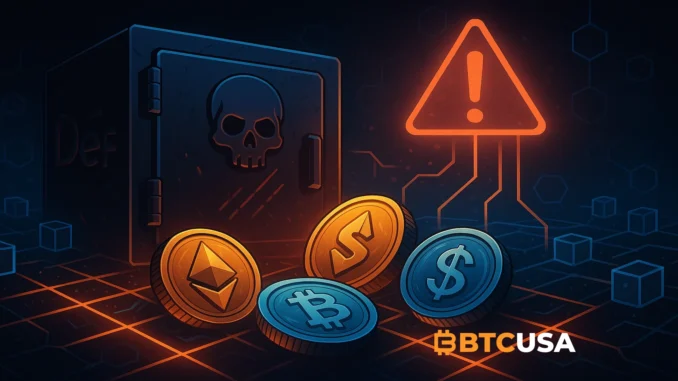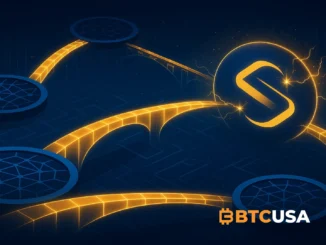
DeFi Faces New Liquidity Crisis: TelosC and Euler Vaults Fully Utilized
The decentralized finance (DeFi) ecosystem is facing renewed turbulence after vaults managed by TelosC on the Euler platform reached full utilization, effectively running out of available liquidity. Analysts warn this could mark the start of another chain reaction across interconnected protocols.
100% Utilization Means No Withdrawals
According to blockchain security firm PeckShield, several TelosC-managed vaults on Euler have hit 100% utilization — meaning all deposited funds have been lent out. As a result, liquidity providers are currently unable to withdraw their assets.
The vaults contain an estimated $27 million across multiple assets:
• WETH – $5.5 million
• USDC – $14.3 million
• WBTC – $7.3 million
This situation leaves lenders locked out, while borrowers continue to hold the funds — a dangerous dynamic for protocols built on continuous liquidity flow.
Low Yield Raises Concerns
Despite the high utilization, the reported yield for depositors remains at a puzzlingly low 0.18% annually. This suggests that the lending model may be under stress, with poor incentives for debt repayment and limited revenue generation for the protocol.
Market observers note that this imbalance could indicate structural inefficiencies — or even smart contract vulnerabilities — within the affected pools.
Fallout from Stream Finance Collapse
Analysts have also linked the TelosC issue to the recent collapse of Stream Finance, whose assets and positions were integrated with Euler and other DeFi platforms. If a portion of those assets remains locked or compromised, the ripple effects could spread through the broader DeFi ecosystem.
The interconnected nature of DeFi protocols means that liquidity shortages in one pool can quickly propagate across others, causing rising borrowing costs, liquidation risks, and volatility in synthetic token prices.
Potential Domino Effect
With multiple pools already constrained, the DeFi market may be heading toward a period of restricted liquidity. Rising demand for stable borrowing assets such as USDC could push lending rates higher, creating an imbalance between lenders and borrowers.
Should the situation worsen, Euler and its ecosystem partners might face forced liquidations and collateral price shocks — events that could amplify market instability across decentralized lending platforms.
Outlook: Testing the Resilience of DeFi
This latest liquidity crunch underscores a persistent risk in decentralized finance: when confidence falters, liquidity evaporates. The coming weeks will reveal whether Euler and TelosC can restore balance or if DeFi is on the brink of another systemic stress event.
For now, liquidity providers remain stuck, yields remain low, and confidence in decentralized credit markets continues to be tested.


